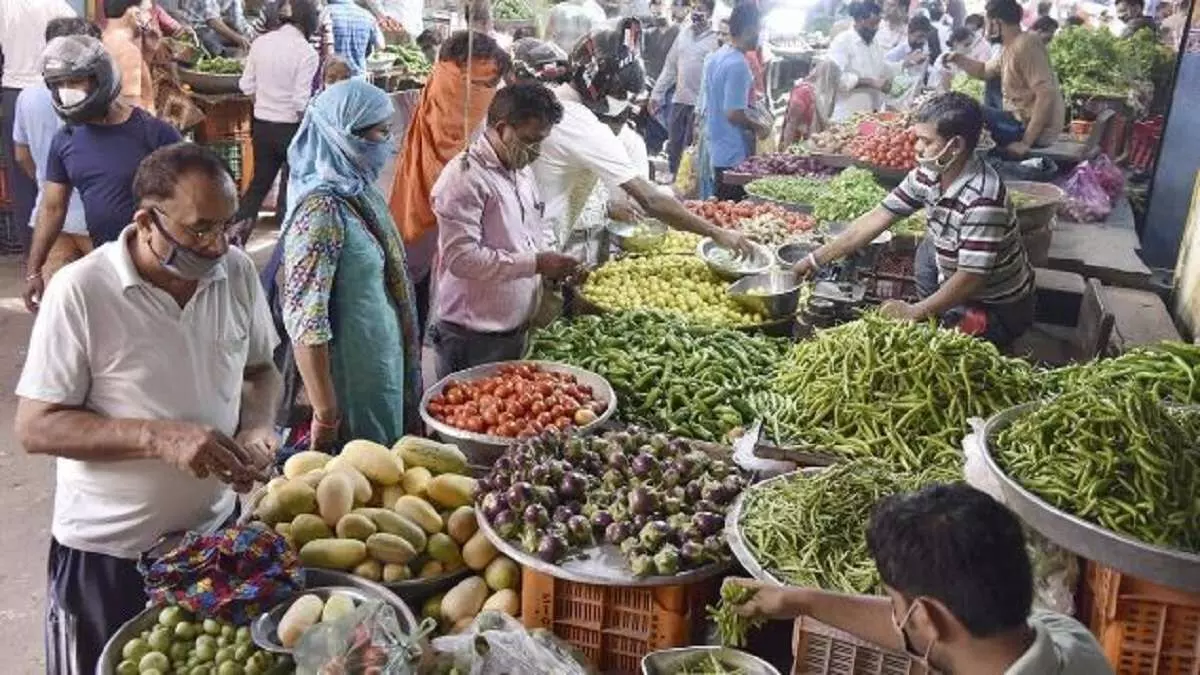Retail inflation falls to 4-month low of 5.22%

New Delhi: Retail inflation in India dropped to a four-month low of 5.22 per cent in December, primarily driven by a decline in food prices, including vegetables, according to government data released on Monday. The dip provides the Reserve Bank of India (RBI) some flexibility to consider reducing the key interest rate in upcoming monetary policy reviews.
The Consumer Price Index (CPI)-based inflation moderated for the second consecutive month after breaching the RBI’s upper tolerance limit of 6 per cent in October. December’s inflation rate marked a decline from 5.48 per cent in November and 5.69 per cent in the same period last year.
The National Statistics Office (NSO), in its report, highlighted notable price reductions in vegetables, pulses, cereals, sugar, and personal care items. Food basket inflation dropped to 8.39 per cent in December, compared to 9.04 per cent in November and 9.53 per cent in December 2023.
“The CPI (General) reached its lowest level during this period in July 2024. However, the December figures for overall CPI and food inflation are the lowest in four months,” the NSO said.
Among food items, peas recorded the highest year-on-year inflation at 89.12 per cent, followed by potato (68.23 per cent), garlic (58.17 per cent), coconut oil (45.41 per cent), and cauliflower (39.42 per cent). On the other hand, jeera, ginger, dry chillies, and LPG (excluding conveyance) registered the lowest inflation rates.
Inflation rates varied across rural and urban areas, with rural inflation at 5.76 per cent and urban inflation at 4.58 per cent. Chhattisgarh recorded the highest inflation at 7.63 per cent, while Delhi reported the lowest at 2.51 per cent.
The RBI’s Monetary Policy Committee (MPC) is set to meet in February. The RBI has maintained the repo rate at 6.5 per cent since February 2023 to manage inflation while supporting economic growth. The central bank, tasked with keeping inflation at 4 per cent (+/- 2 per cent), had recently raised its inflation projection for the current fiscal year to 4.8 per cent from 4.5 per cent, citing persistent food price pressures.
The CPI-based inflation had spiked to 6.2 per cent in October, following an average of 3.6 per cent during July-August, before moderating to 5.5 per cent in September.
The NSO collects price data weekly from 1,114 urban markets and 1,181 villages across all states and union territories. This robust dataset underpins the CPI figures that guide monetary policy decisions.



